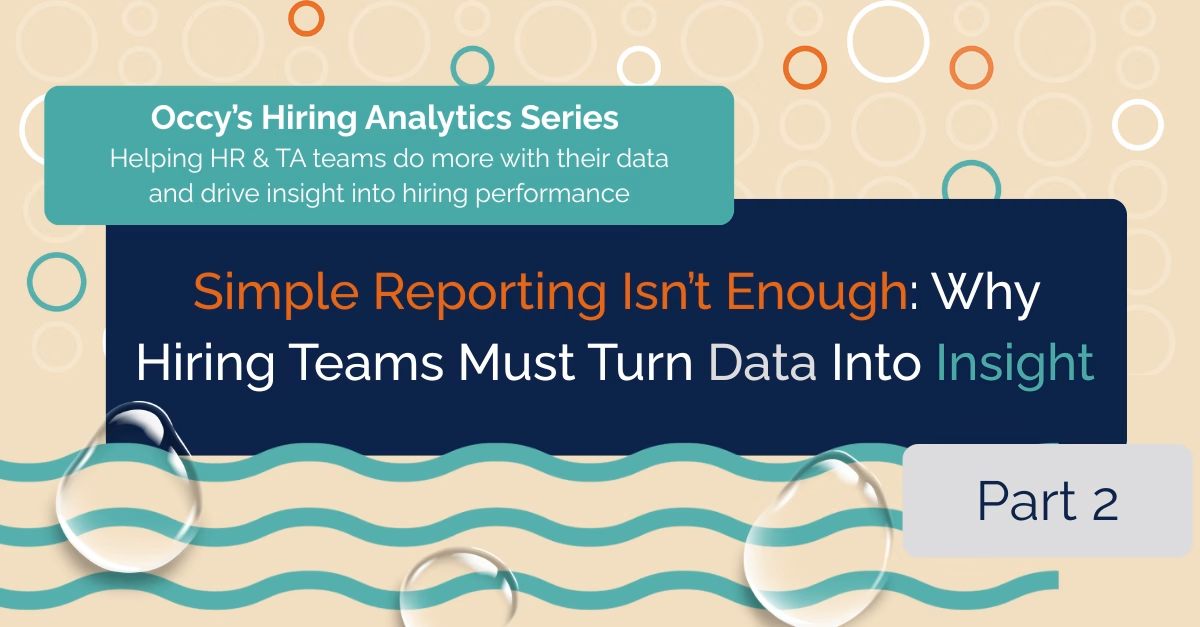Introduction
Picture this: You’ve been invited to a board meeting, when the leadership team looks across at you and asks, “So, what’s the ROI of our hiring process?”. Suddenly, the slide deck you’ve spent days preparing feels a little light on numbers.
You’ve got the key metrics, but do they dig into what matters most: what’s working, what’s not, and why? You tell them the latest figures around cost-per-hire and time-to-fill. The conversation swiftly moves from hiring metrics to another business function. No questions, no interest.
Why? Because numbers alone don’t inspire action.
That’s the difference between reporting and insight. Reporting tells you what happened. Insight explains why it happened and what you should do about it.
For HR and talent professionals in growing businesses, this difference is critical. Reporting maintains shallow visibility. Insight builds credibility with leadership, secures investment and pushes performance forward.
This blog dives into how you can move from reporting to insight — with practical frameworks, real-world examples, and stories of businesses that saved millions by going beyond the dashboard, finding out the why, and making informed bets about what to do next.
(Part 2 of our series based on The HR Leader’s Guide to Using Hiring Data for Strategic Impact. If you missed part 1, check out “10 Essential Hiring Metrics Every HR Leader and Manager Must Track”. Coming next: “Strategic Data Analysis: How First Principles and Incremental Improvement Transform Hiring”).
#Simple #Reporting #Isnt #Hiring #Teams #Turn #Hiring #Data #Insight
